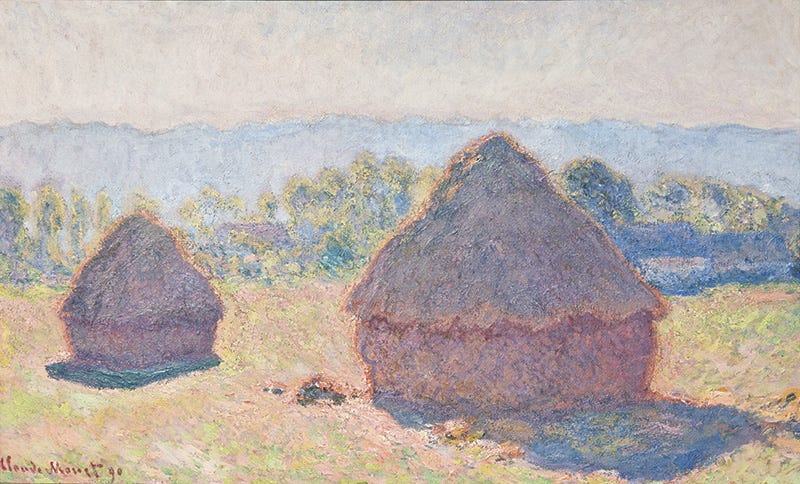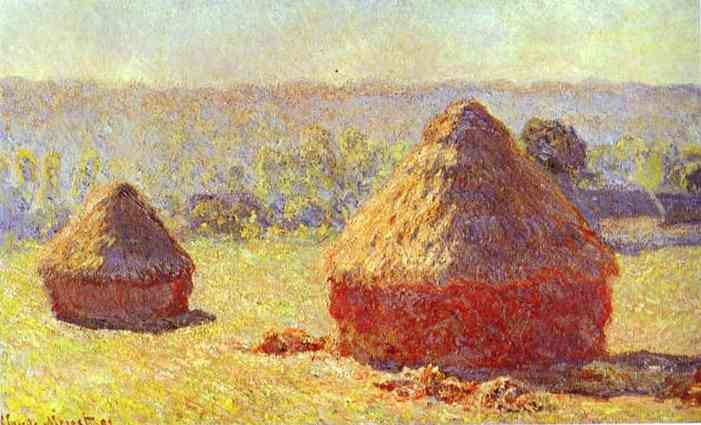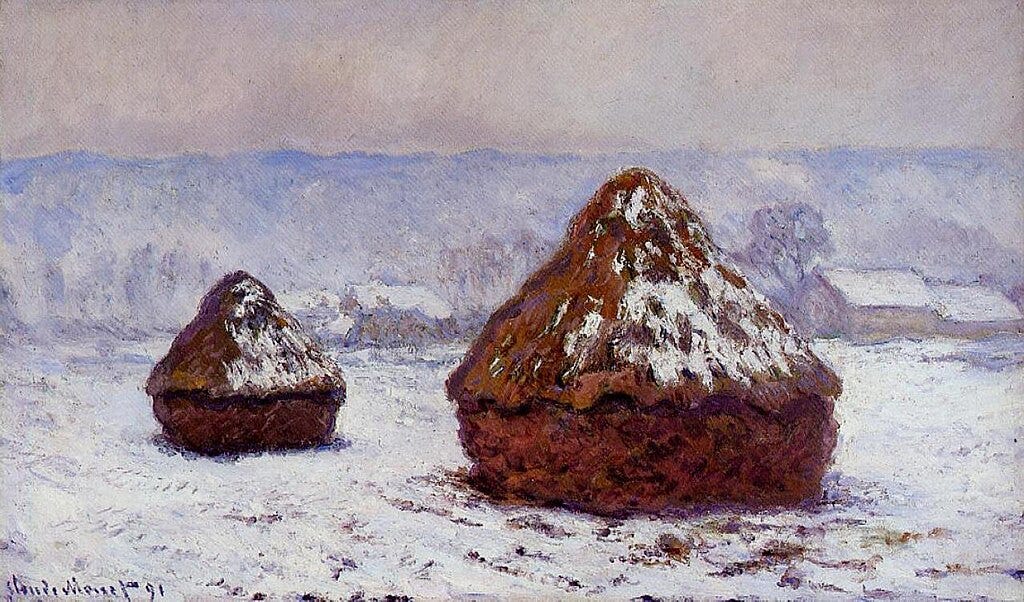The pleasure of contemplation
The movement of the static and the detail of the simple
🏷️ Categories: Creativity, Attention, Time
Nothing stands still.
What would happen if you observed the same thing every day for a year? A tree, a rock, a square metre of earth... Stillness would become movement and your eyes would delve into details that no one else sees.
That's the idea of contemplation.
We always look at what shines, what attracts us by its colour, movement or shape. By contrast, everything else seems static, but only those who contemplate patiently will see how the static moves. The painter Monet knew very well what I am telling you.
Mont spent a whole year looking at piles of straw in the fields.
In his series of paintings ‘The Haystacks’, he painted these haystacks at completely different times and seasons of the year. 29 canvases that demonstrate how the patient eye can see details that others miss and how nothing stands still.
What could be more trivial than painting heaps of straw?
He immortalised the haystacks under all kinds of conditions: dawn, dusk, midday, in the snow, in the rain, during the hot summers, in the greenery of the first, when autumn colours the ground orange with dry leaves, and so on.
Here you can see some of the 29 canvases in the series.






A single painting means nothing, it is the sum of them all that shows us that even the most static and trivial conceals movement and detail.
Time leaves nothing still.
Less doing and more being
The philosopher Byung-Chul Han, spoke of how in our modern age, dominated by constant action, we have lost the ability to simply be rather than do.
Through contemplation we are inspired and learn from subtle details.
A simple walk through a park becomes an opportunity to observe the interplay of light and leaves, the almost imperceptible movement of a breeze or the hidden life of insects beneath the grasses that bring the park to life.
Thousands pass through the park every day, hardly anyone has actually seen the park.
Contemplation, in this sense, is an act of resistance against the constant pressure to always be doing something.
It is an invitation to be and not to do.
I have experienced this same feeling of seeing the haystacks with great intensity when looking at old photographs and reading past diary entries.
The passage of time in our lives is so subtle and gradual that we often don't notice the changes we experience. But by looking at images of distant moments, we are suddenly aware of how we have changed, in the same way that winter haystacks differ from summer haystacks.
It was this reflection on time that led me to start my diary.
Each day is a new opportunity to draw my own self-portrait, to be a haystack in the field of my life. A single day is insignificant, but it is in reviewing the entries as a whole that I begin to see how I have changed over time.
Memory gets distorted and we lose it when we leave the world, but the written words remain, like Monet's haystacks.
✍️ Your turn: When was the last time you took a moment to observe something seemingly trivial and discovered a hidden world?
💭 Quote of the day: ‘Contemplation seems to be the only luxury that costs nothing’. I Capture the Castle, Dodie Smith.
Thank you for joining me in this new opportunity, see you soon ♥️.
References 📚
Han, B. (2015). The burnout society. Stanford University Press.
Monet, Claude (1890). Grainstacks in the Sunlight, Morning Effect. Colección privada.
Monet, Claude (1890). Grainstacks, in Bright Sunlight. Hill-Stead Museum, Farmington.
Monet, Claude (1890-91). Grainstack, White Frost Effect. Shelburne Museum, Vermont
Monet, Claude (1891). Stacks, End of Summer, (Meules, fin de l'été), Musée d'Orsay, Paris, Francia.
Monet, Claude (1891). Stack of Wheat (Thaw, Sunset). The Art Institute of Chicago.
Monet, Claude (1891). Wheatstacks, Snow Effect, Morning. J. Paul Getty Museum.





I love these paintings. The color of sunlight and the clear or opaque quality of the atmosphere have always fascinated me. Every evening just after sunset, I sit in my garden and watch the light change. Sometimes there's a violet hue to the light as it shimmers through the dust in the air. Such happens in an arid place lice the desert where the wind comes up every afternoon. There's the change in the warmth of the light during the day, too and Monet catches it in these paintings. In the morning, the light is clear and crisp. In the afternoon, when the sunlight is at its most intense, it glares with bright yellow qualities, especially in summer. Winter sun casts a chilling aspect. In the evening, the quality of sunlight is warmer than in morning, but seems tired and ready for sleep.
luvely, alvaro. thank you. may i ask your age? i am 67yrs.